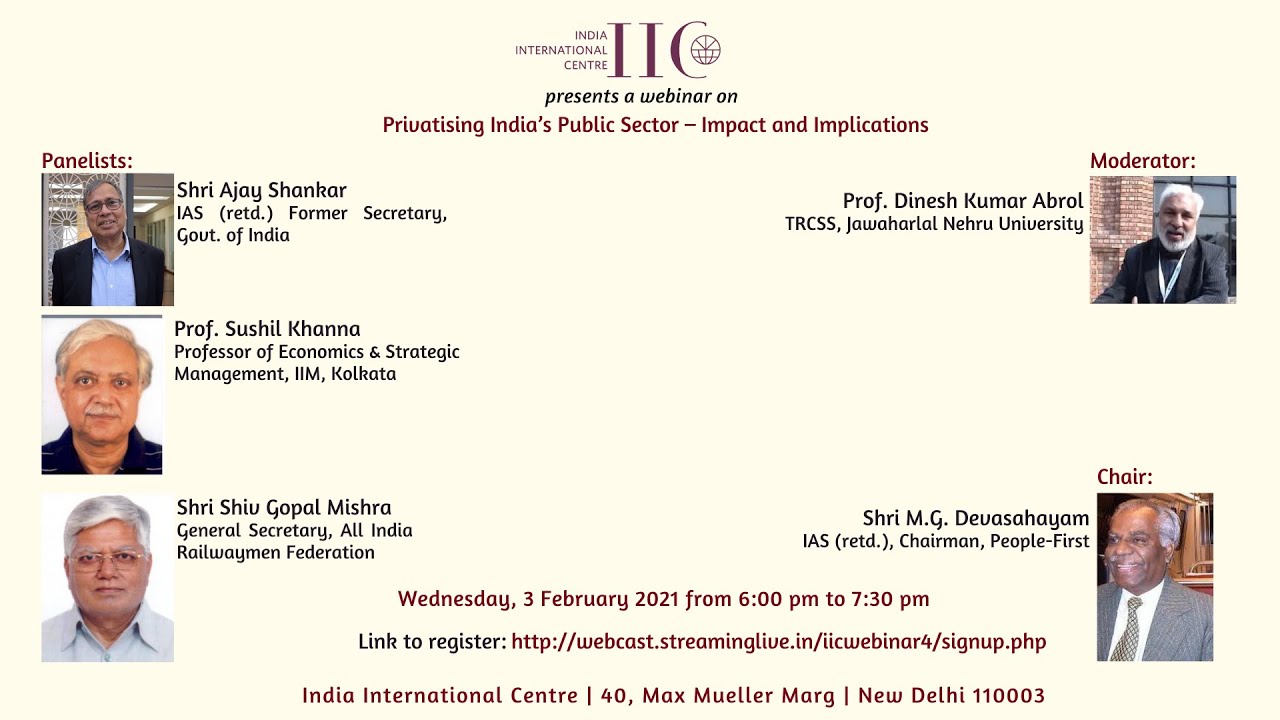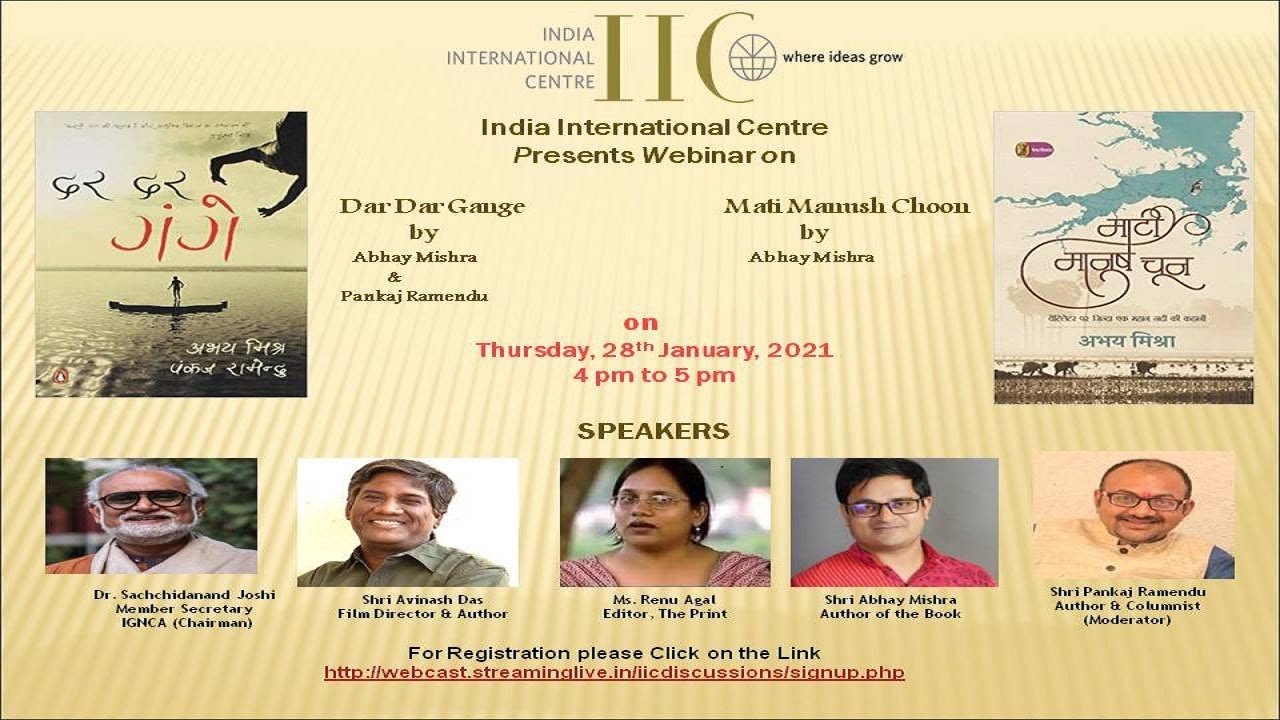Privatising India’s Public Sector – Impact and Implications
Panelists: Shri Ajay Shankar IAS (retd.), former Secretary, Govt. of India; Prof. Sushil Khanna, Professor of Economics and Strategic Management, IIM, Kolkata; and Shri Shiv Gopal Mishra, General Secretary, All India Railwaymen Federation
Moderator: Prof. Dinesh Kumar Abrol, TRCSS, Jawaharlal Nehru University
Chair: Shri M.G. Devasahayam, IAS (retd.), Chairman, People-First
Built over decades with people’s money, India’s public sector is the repository of huge assets including land and minerals, vital infrastructure and huge productive forces. Public sector in India was an instrument to attain self-reliant economy and create the industrial base of the country. The discussion will focus on the impact and implications of dismantling the public sector from the perspectives of policy aspects; an assessment of the performance of public enterprises; impact on the economy and the common man, etc.



































